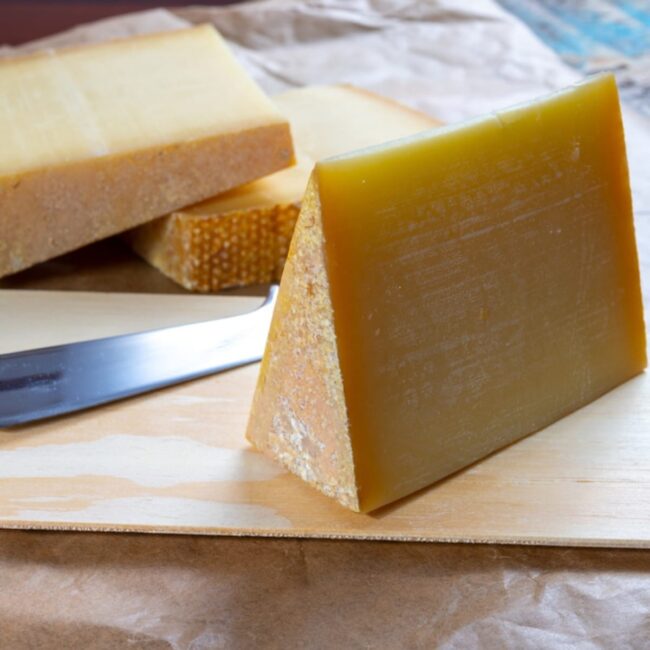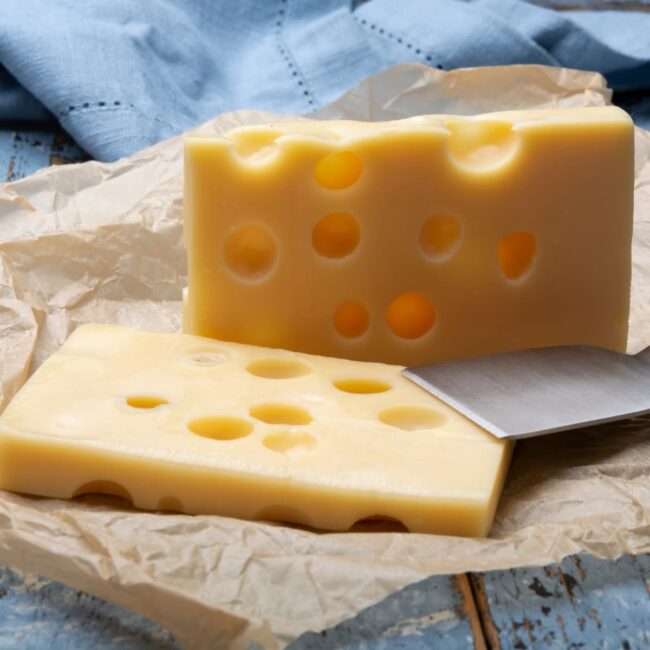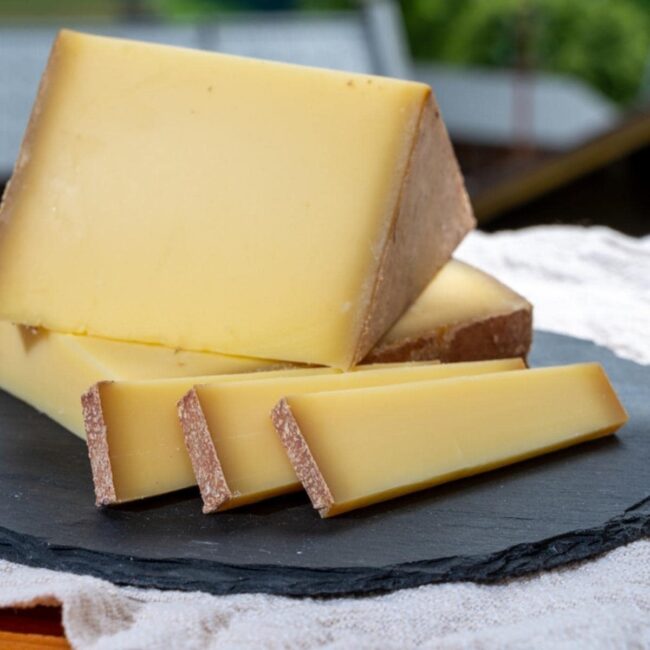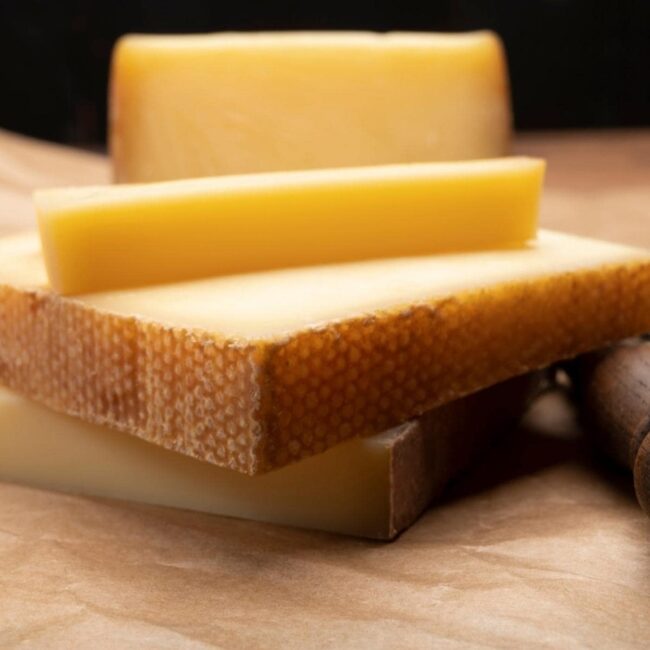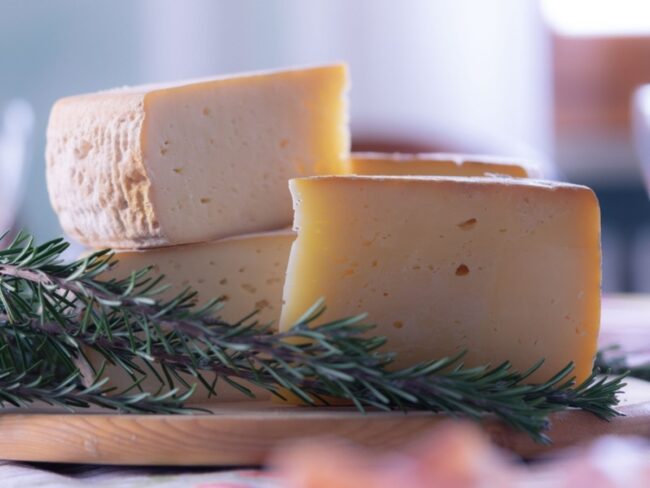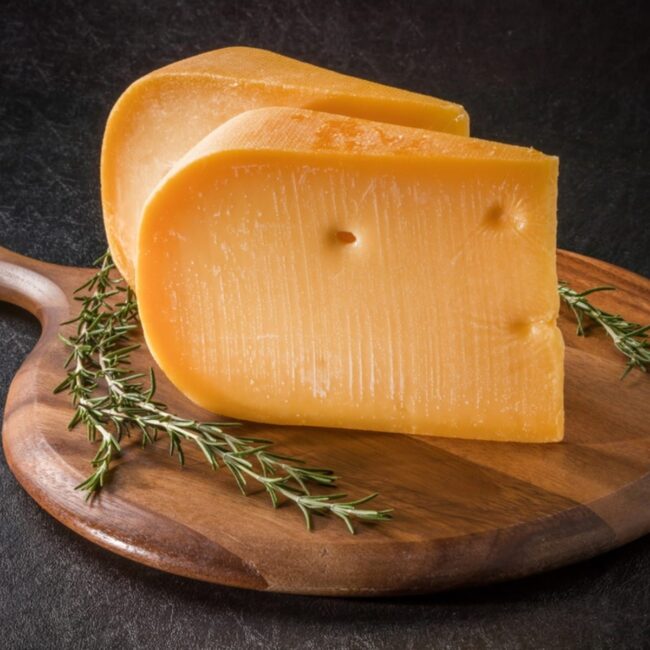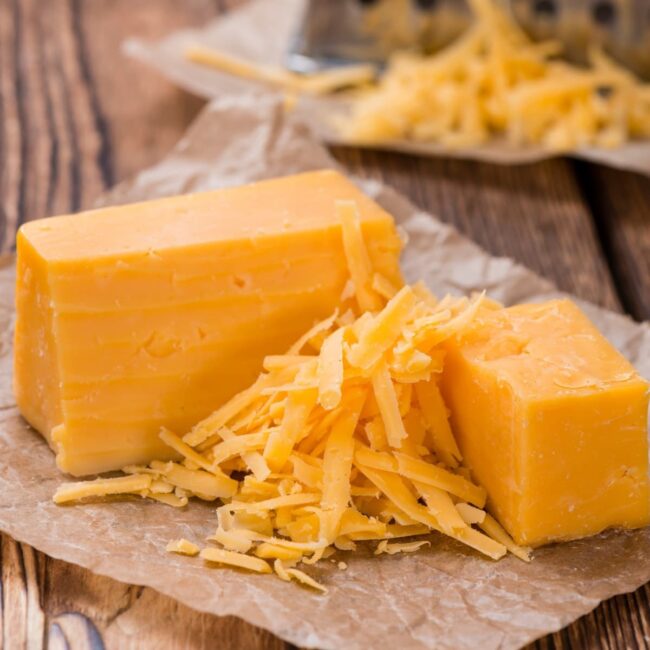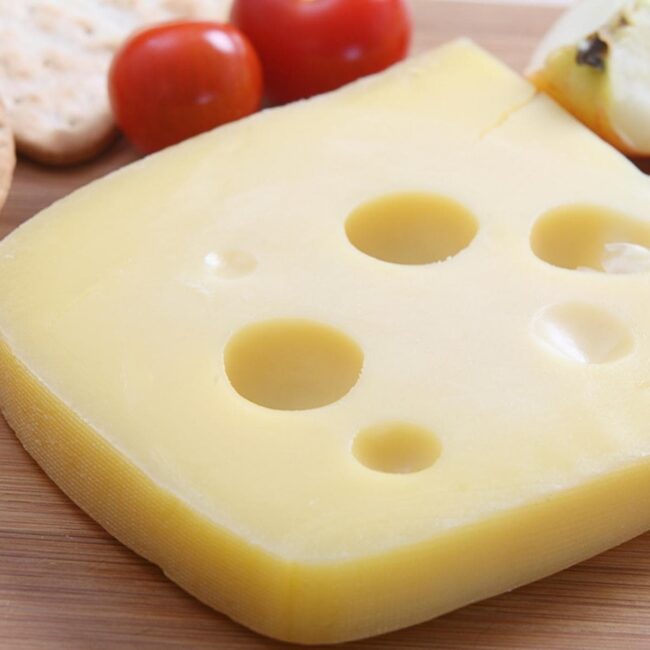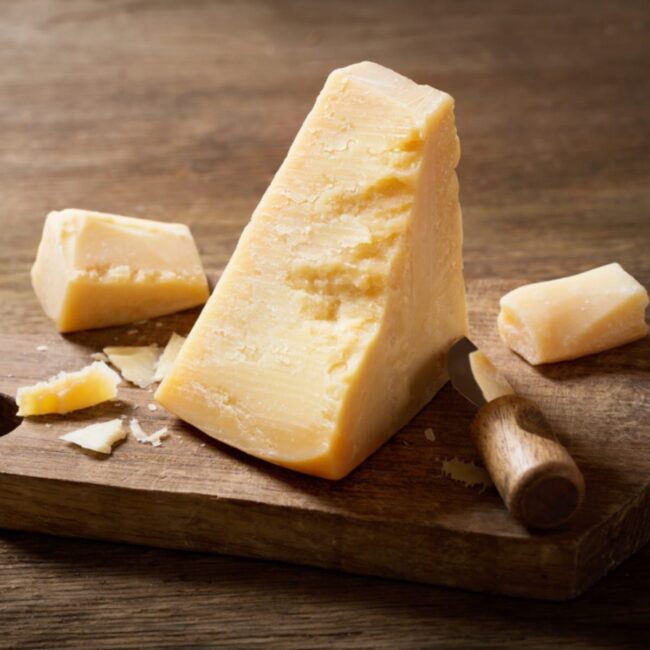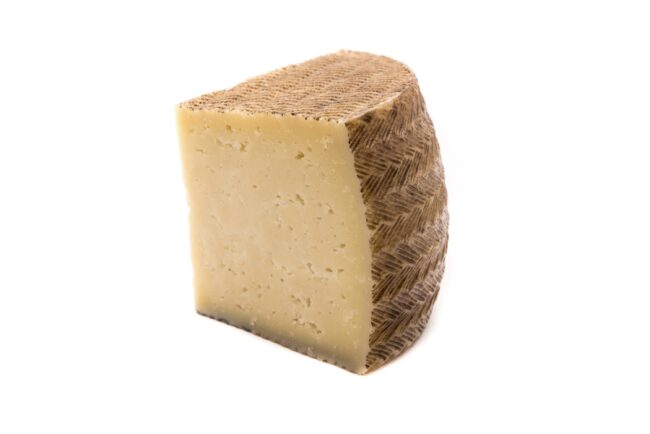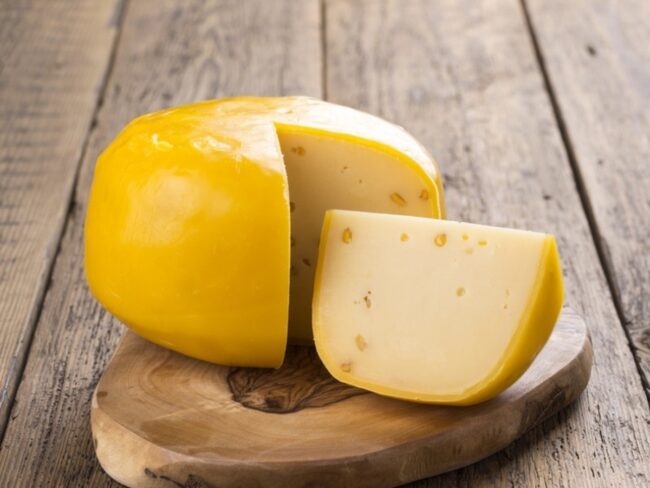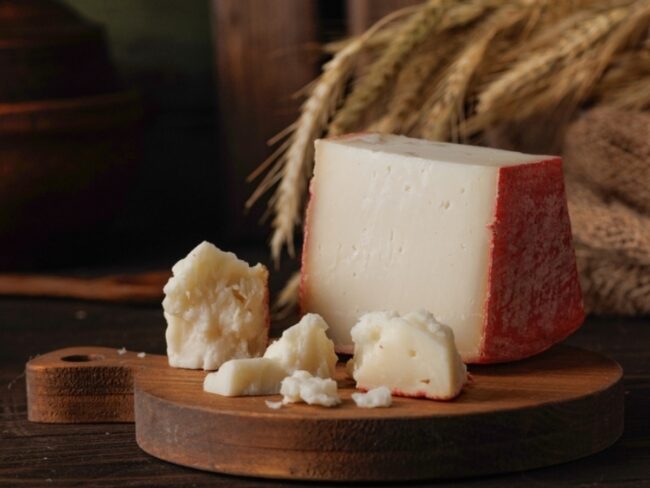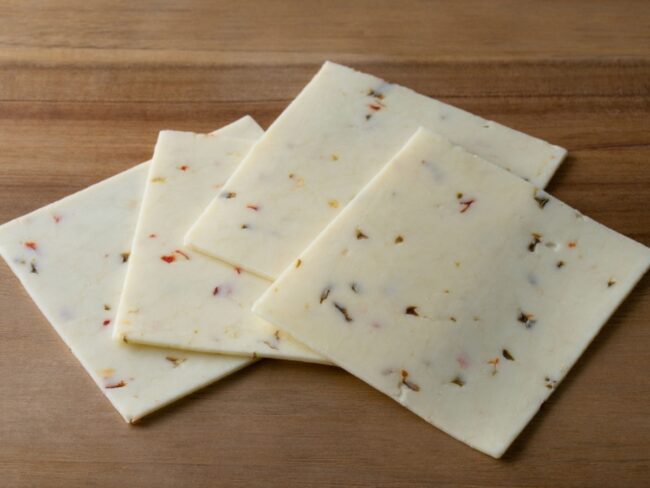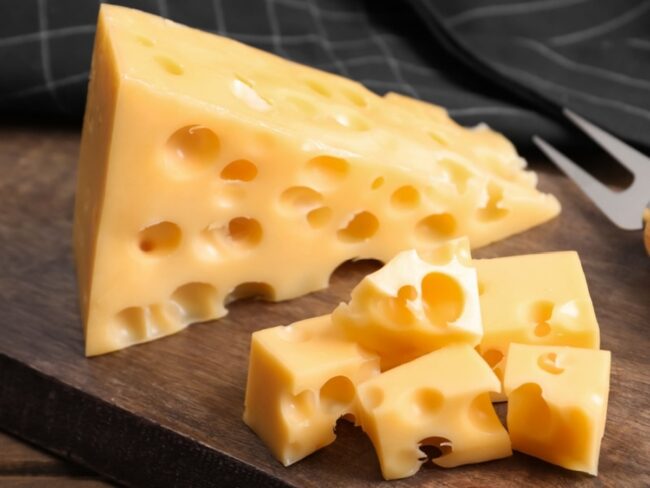17 Nutty Comte Cheese Substitutes for Perfect Melting
Comte cheese substitutes capture its nutty, slightly sweet taste while offering unique textures. Some melt effortlessly, making them ideal for fondues and gratins.
Others maintain a firmer structure, perfect for slicing and snacking. Balancing creaminess and flavor depth is key when selecting an alternative.
The right choice depends on the dish and the flavor profile desired. The list below features 17 fantastic options to replace Comte cheese:
Exploring the World of Comte Cheese
Learn about Comte cheese, its origins, flavor profile, and culinary uses.
Where It Comes From
Comté cheese is a semi-hard delight hailing from the Jura Mountains in France, recognized for its rich flavor and smooth texture. Crafted through time-honored methods, this cheese stands out with its nutty undertones and hints of caramel that evolve as it ages.
Originating in a region celebrated for its dairy farming, Comté embodies both tradition and craftsmanship. You’ll find this versatile cheese perfect for snacking or pairing with fruits and wines, making it an excellent addition to any charcuterie board or gourmet dish.
Its distinct character adds depth to various recipes while showcasing the artisanal heritage behind French cheesemaking.
What Makes It Unique
Hard cheese stands out with its firm texture adorned by tiny holes, creating a unique visual appeal. The natural rind adds to its rustic charm while enhancing the overall flavor profile.
Its bold character makes it an essential addition to any cheese platter, effortlessly drawing attention and admiration. Perfect for pairing with fruits or wines, this cheese brings sophistication without losing touch with traditional roots.
Each bite reveals a depth of flavor that can elevate casual gatherings into memorable experiences.
How It’s Made
Comté cheese is a celebrated French cheese known for its rich flavors and complex character. Crafted exclusively from cow's milk, the production process incorporates rennet to initiate coagulation, forming curds that are essential for its texture.
The aging period plays a vital role; as it matures over four months or even years, you can experience an evolving depth of taste that transforms with time. This meticulous method results in a distinctive profile where each wheel reflects the unique terroir of the Jura region.
Whether enjoyed on its own or paired with various accompaniments, Comté offers an authentic taste journey rooted in tradition.
Ways to Use in Cooking
Comté cheese adds a rich, nutty flavor that enhances various dishes.
Its versatility shines in recipes like fondue and gratin, where it melts beautifully to create creamy textures.
Including Comté in quiches offers depth, while its presence in salads brings a savory note.
Layering it into sandwiches elevates simple meals with delightful taste and character, making this cheese an essential ingredient for anyone looking to impress at the dinner table.
Nutritional Benefits
Comté cheese is a nutrient-dense option that boasts an impressive array of protein, calcium, and healthy fats.
This French delight suits vegetarians who include dairy in their meals, enhancing its appeal as a versatile ingredient for various dishes.
You can incorporate Comté into salads, sandwiches, or even melt it over vegetables to add depth to your meals.
With its distinct flavor profile and rich texture, this cheese not only contributes essential nutrients but also elevates everyday recipes effortlessly.
Taste and Aroma
Comté cheese captivates with its intricate flavor profile, showcasing a delightful interplay of sweet, nutty, and fruity nuances underpinned by earthy undertones.
Each bite unfolds layers of taste that create a rich savory experience enhanced by the natural sweetness that develops over time.
This artisanal cheese is not just about taste; it's an exploration of textures and aromas shaped by the unique aging process.
Perfect for pairing with fruits or crusty bread, Comté adds depth to any cheese board or culinary creation you envision.
Top Alternatives for Comte Cheese
These cheeses provide the nutty, smooth taste of Comte in cooking and cheese boards.
Gruyere
Gruyère cheese is a remarkable alternative to Comté, originating from the same family of French cheeses. Known for its creamy richness and nutty notes, it seamlessly enhances dishes like fondue or croque monsieur.
This cheese melts beautifully, making it perfect for creating gooey toppings on your favorite casseroles or gratins. Its slightly sweet undertones pair well with both savory and sweet recipes alike.
Whether you’re preparing a cozy meal at home or impressing guests during a gathering, Gruyère delivers that sought-after depth of flavor without missing a beat. When looking for substitutes in cooking or baking, this versatile option stands out as an ideal choice.
Emmental
Emmental cheese presents a delightful option for those seeking alternatives to Comté. Renowned for its characteristic holes, this French-origin cheese offers a mild and subtly nutty taste that enhances various dishes.
Its exceptional melting properties make it an ideal choice for comforting recipes like French onion soup or melted cheese sandwiches. You’ll find Emmental seamlessly replacing Comté in your favorite cheesy creations, enriching the overall flavor profile without overpowering other ingredients.
When looking to diversify your culinary experiences with cheeses, consider Emmental as a versatile substitute that brings its unique charm to the table while retaining deliciousness.
Beaufort
Beaufort serves as an excellent substitute for comté, boasting a creamy texture and subtle sweetness that enhances various recipes. This French cheese melts seamlessly, making it ideal for fondues or any dish where a rich, smooth consistency is desired.
With its distinct flavor profile, you’ll find Beaufort elevating your culinary creations effortlessly. Perfectly suited for gratins and sauces alike, it provides versatility in both traditional and contemporary meals while maintaining an authentic taste experience.
Its unique character adds depth to any recipe calling for melted cheese without overshadowing other ingredients.
Appenzeller
Appenzeller is a Swiss cheese known for its unique herbal flavor and rich complexity. Its firm texture melts smoothly, making it an excellent choice for enhancing fondue dishes with depth and character.
The distinct tanginess sets it apart, providing a bold contrast to other cheeses in your recipes. When you include Appenzeller, you're inviting an intriguing taste experience that elevates both classic and contemporary dishes alike while bringing warmth to any gathering centered around food.
This versatile cheese can also complement various accompaniments like bread or fruits effortlessly.
Fontina
Fontina stands out as a fantastic alternative to Comté, hailing from Italy’s picturesque Aosta Valley. Renowned for its creamy texture and subtle earthy flavors, this cheese melts beautifully in dishes like fondues or gratins.
You can easily incorporate it into recipes that call for Comté without compromising on taste. The nuanced flavor profile enhances both savory and sweet pairings alike, making it an excellent choice for cheese boards too.
When seeking a substitute that balances richness with depth, Fontina delivers exceptional results in your culinary creations while inviting you to experiment with new textures and tastes.
Raclette
Raclette cheese stands out as a favorite for its remarkable ability to melt, transforming any meal into a comforting experience. This semi-hard Swiss variety boasts a creamy texture that pairs beautifully with potatoes, pickles, and cured meats.
When melted, it creates an irresistible layer of gooey goodness perfect for dipping or layering on your favorite dishes. Whether you're hosting a cozy gathering or simply enjoying dinner at home, raclette adds warmth and flavor to every bite.
For those seeking rich tastes with effortless preparation, this option is sure to impress during chilly evenings around the table.
Gouda
Gouda serves as an excellent alternative to Comté, celebrated for its diverse flavor profile ranging from sweet notes in younger varieties to robust nuttiness in aged forms.
This cheese melts beautifully, making it a fantastic choice for dishes that require a creamy texture and depth of taste.
Whether you’re crafting gourmet grilled cheese sandwiches or enhancing pasta bakes, Gouda adds character while seamlessly fitting into your culinary creations.
The versatility of this cheese ensures it can elevate everything from casual snacks to elegant platters with ease.
Cheddar
Cheddar stands out as a remarkable alternative to comté, renowned for its robust sharpness and adaptability. This cheese seamlessly enhances grilled cheese sandwiches or melts beautifully into dishes, providing an impactful flavor that many find appealing.
With origins in England, it brings a unique twist to recipes where creamy textures are desired alongside rich taste. You’ll appreciate how well it pairs with everything from burgers to pasta bakes, offering you countless culinary possibilities while elevating your meals effortlessly.
Cheddar’s distinct character makes it an excellent choice for those seeking depth in their cooking without the need for traditional French cheeses.
Jarlsberg
Jarlsberg is a Norwegian cheese known for its smooth texture and rich, buttery taste that carries a hint of sweetness. Its mild profile makes it an ideal substitute for those seeking a lighter flavor without sacrificing creaminess.
You can use Jarlsberg in various culinary creations, from elaborate cheese platters to comforting baked dishes. The semi-soft consistency melts beautifully, enhancing both savory recipes and sandwiches with delightful richness.
Whether you're crafting gourmet meals or casual snacks, this versatile cheese adds depth to your favorite flavors seamlessly while pleasing diverse palates.
Other Cheese Varieties That Work as Substitutes
Explore different cheese options that can replace your usual favorite in recipes.
Parmesan
Parmesan stands out as a hard cheese celebrated for its bold flavor profile. This Italian favorite is typically aged, which intensifies its nutty and savory notes, making it an essential addition to various dishes.
Frequently grated over pasta or salads, it adds depth and richness that transforms ordinary meals into something special. Beyond enhancing taste, Parmesan also offers versatility in the kitchen; you can incorporate it into sauces or enjoy it on a charcuterie board with fruits and nuts.
A sprinkle of this cheese elevates your culinary creations effortlessly while providing an authentic touch to your dining experience.
Alpine Cheese
Alpine cheese originates from the high-altitude regions of the Alps, showcasing a variety of cow's milk cheeses. These cheeses boast strong and hearty flavors that enhance many classic recipes, particularly those requiring melting qualities.
You’ll appreciate how their unique characteristics make them ideal for fondue or gratins, bringing depth to any dish they grace. I find these cheeses transform simple meals into something extraordinary with just one addition.
With a rich history tied to their rugged environment, Alpine cheese stands out as an essential choice in gourmet cooking.
Dutch Cheese
Dutch cheese offers a rich and diverse selection that elevates any dish. Gouda stands out with its semi-hard texture, making it an ideal ingredient for quiches or casseroles due to its excellent melting qualities.
On the other hand, Edam presents a milder flavor profile, which makes it perfect for pairing with crackers or adding to sandwiches. These cheeses not only enhance your meals but also bring a taste of Dutch tradition to your table while satisfying various palates effortlessly.
Italian Cheese
Italian cheese embodies a rich tradition, renowned for its variety and distinct flavors.
Fontina stands out with its smooth and creamy texture, making it an ideal choice for melting in various recipes beyond just pizza.
Parmesan offers a firmer alternative, perfect when grated over salads or stirred into soups to enhance their taste.
Exploring the world of Italian cheeses opens up endless culinary possibilities that can elevate your dishes with depth and character while allowing you to enjoy unique flavor profiles from this celebrated cuisine.
Cows Milk Varieties
Cows milk varieties encompass a range of cheeses that are rich in flavor and texture, making them popular among cheese lovers. These selections often appeal to vegetarians who enjoy dairy products while providing a satisfying alternative to Comté.
It's essential to consider that many of these cheeses utilize traditional rennet during production, which may not align with the dietary choices of strict vegetarians. You can discover an exciting array of options like cheddar or gouda, each offering its own unique profile and culinary versatility.
Vegan Cheese Options
Crafted from ingredients such as nuts and soy, these alternatives can easily melt into various dishes, making them versatile for cooking or topping meals.
While they may differ in flavor from their dairy counterparts, many find them satisfying additions to pizzas, pastas, and sandwiches.
If you're exploring non-dairy choices due to dietary preferences or restrictions, you'll discover an array of flavors that enhance your culinary creations without compromising on enjoyment.
Swiss Cheese
Swiss cheese is renowned for its exceptional melting qualities and nutty flavor profile, making it a favorite in various culinary creations. Emmental and Gruyère are two standout varieties from Switzerland that elevate dishes with their rich taste and smooth texture.
These cheeses shine particularly when melted into fondue or paired with crusty bread, creating a comforting experience. Beyond fondue, they enhance casseroles by adding depth to each bite while maintaining the perfect gooeyness you desire in baked dishes.
You’ll find these cheeses effortlessly transforming everyday meals into something special that friends will remember long after the meal ends.
Norwegian Cheese
Norwegian cheese stands out with its unique characteristics, and Jarlsberg is a prime example. Known for its distinct large holes, this cheese brings a sweet and nutty flavor that appeals to many palates.
Enjoy it on sandwiches or simply savor it as a standalone snack; it's versatile enough to enhance various dishes. For those who prefer something less intense than stronger cheeses, Jarlsberg offers an inviting option without compromising taste.
This delightful choice can easily become your go-to ingredient in both casual meals and special occasions, showcasing the charm of Norwegian dairy craftsmanship.
Choosing the Best Replacement for Comte Cheese
Find out how to select suitable alternatives when Comte cheese isn't available.
Best Substitutes and Their Qualities
Comté cheese is a semi-hard French variety known for its unique, mild nuttiness and creamy yet slightly grainy texture. This cheese excels in both flavor and versatility, making it an ideal addition to various dishes.
When searching for substitutes that mimic Comté's character, consider options like Gruyère or Jarlsberg; these cheeses carry similar earthy sweetness while maintaining a comparable mouthfeel.
Other suitable alternatives include aged Gouda or Emmental, which also reflect those delightful overtones you enjoy with Comté.
Texture and Consistency Matters
The ideal substitute features a silky texture that seamlessly integrates into your dish. Textural qualities vary from semi-firm to creamy, ensuring it maintains the overall consistency without any graininess when replacing young Comté.
A smooth alternative enhances flavors while delivering the richness you seek, making it suitable for various culinary creations. Whether you're whipping up sauces or enhancing cheeseboards, choosing wisely will elevate your dining experience.
Balancing Flavors in Dishes
Cheeses with a gentle nutty flavor are ideal for enhancing dishes without overwhelming them. Seek out options that mimic the distinct hazelnut notes and soft earthy undertones found in Comté.
Varieties like Gruyère or aged Jarlsberg can provide similar characteristics, making them excellent alternatives for your recipes.
These cheeses not only complement but also elevate your culinary creations, ensuring a balanced taste profile in every bite while allowing other ingredients to shine through effectively.
Why Meltability is Important
Melting cheese is essential for creating rich and creamy dishes that tantalize the palate. A great melting cheese ensures a smooth, cohesive texture in favorites like fondue or macaroni and cheese without any greasy residue.
When selecting your substitute, look for options such as gouda or fontina; these varieties melt beautifully while adding depth to your culinary creations. You want something that provides both flavor and an inviting stretch when served hot.
The right choice not only enhances the dish but also elevates the overall dining experience with its luscious consistency.
Finding Good Alternatives
Comté cheese is a semi-hard French variety known for its exceptional melting ability and nutty flavor. Easily accessible alternatives like Gruyère, Emmentaler, or Gouda are perfect substitutes you can often find in your local grocery store.
These cheeses maintain the same creamy texture and rich taste that elevate various dishes. Whether you're making a fondue, gratin, or creamy pasta sauce, these options deliver satisfying results without compromising on quality.
Selecting one of these cheeses ensures your recipes remain deliciously indulgent while being convenient to prepare at home.
Choosing Vegan-Friendly Options
Cheese alternatives are ideal for vegetarians and anyone looking to avoid dairy while still enjoying rich flavors. Various options can replicate the creamy texture and subtle saltiness of Comté, enhancing your meals without compromising taste.
Look for plant-based cheeses specifically created to melt beautifully, ensuring that the essence of your recipes remains intact. With these substitutes on hand, you can confidently prepare a range of dishes that satisfy both dietary preferences and flavor cravings seamlessly.
Using Cheese Substitutes in Cooking
Learn how to effectively incorporate various cheese substitutes into your recipes.
How It Melts in Cooking
When selecting the right cheese for dishes that need to melt beautifully, a few options truly shine.
Raclette Cheese: Perfect for gratins, this cheese brings both creaminess and a wonderful depth of flavor to your meals.
Each option transforms classics like fondue or macaroni into unforgettable experiences without losing their delicious essence.
Cold Uses and Serving Ideas
When creating cold dishes such as salads or cheese boards, it’s essential for substitutes to maintain flavor balance without overwhelming the other ingredients.
Baking and Cooking Tips
When it comes to creating that appealing golden crust in various dishes, a few cheeses truly stand out.
Serving on a Cheese Platter
Creating an appealing cheese board involves thoughtful selections that highlight diversity and harmony among flavors. It’s essential to include cheeses that vary in texture and taste while balancing with complementary accompaniments like crackers, fruits, and nuts. Here are some standout options for your next gathering:
These choices enhance any cheese experience by bringing together a delightful assortment of tastes that everyone can appreciate.
Pairing Cheeses and Making the Right Choice
Understand how to pair different cheeses and choose the best options for your dishes.
Best Drinks to Pair With
Finding the right drink to enjoy with cheese creates a delightful experience. Here’s how to perfectly pair beverages with Comté:
Pairing with Fruits and Nuts
Pairing fruits and nuts with cheese enhances its taste profile, especially when working with varieties like Comté that boast a sweet and nutty essence. To elevate your cheese experience, consider these options: - Apple Slices: Fresh apple slices introduce a crisp sweetness that contrasts beautifully.
Picking the Right Cheese for a Board
Choosing cheese for a cheeseboard can be an enjoyable experience. A thoughtful selection of diverse textures and flavors enhances the overall appeal.
Best Choices for Cooking
Choosing the right cheese for cooking can enhance your dishes significantly.
You’ll discover that selecting the perfect cheese elevates both taste and texture in every dish you create.
Proper Storage and Aging of Cheese Alternatives
Get tips on how to store and age cheese substitutes to maintain their quality.
How to Store Properly
When it comes to preserving your cheese alternative, storing it correctly in the refrigerator is essential. Aim for a temperature range between 35°F and 45°F. Wrapping the cheese in parchment paper followed by aluminum foil helps maintain freshness while allowing some air circulation, preventing moisture buildup. Here are key points regarding Gruyere, an excellent substitute for Comté:
How It Ages Over Time
The maturation of cheese plays a vital role in shaping its unique flavors and textures, much like the process seen with Comté. Gruyere shares similarities and undergoes aging for a minimum of four months, sometimes extending beyond ten months to enhance its taste experience. Here’s what you should know about Gruyere:
Each cheese boasts distinct qualities that become more pronounced as they age. When selecting an alternative to Comté, focus on cheeses not only with comparable flavor but also those that share similar aging timelines for the best results.

